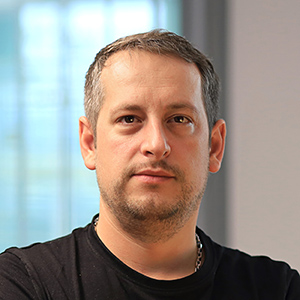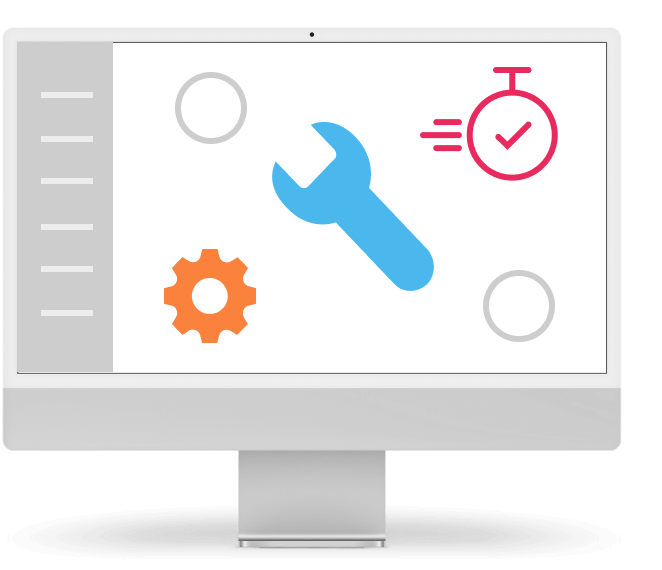New Era of Infrastructure – Hyperdistributed Cloud
IT infrastructure has already gone through several revolutionary phases and now we are heading to the next one.
In fact, it is more of a renaissance of what companies have used in the past. The company’s operations have moved from physical servers to centralized public clouds. However, after some time, their properties ceased to suit companies and hybrid approaches came onto the scene. This then led to the need for a hyperdistributed cloud.
The reasons? There are many. However, we can generally divide them into the categories of regulation, security, latency, AI and data sovereignty. Before we delve into them in more detail, let’s look at what a hyperdistributed cloud actually is.
This knowledge is crucial for CXOs because it is not just a small part of IT operations but one of the options when making strategic decisions about the operation of the company. That subsequently impacts the entire operation, efficiency and security.
What is a hyperdistributed cloud?
The name is pretty self-explanatory. It’s virtualized computing resources that aren’t located in one place. You can think of it as a network of smaller warehouses around the world that a company operates instead of one large central warehouse.
The basis of hyperdistribution is the diversification of locations where the entire environment runs. Everything is centrally managed, though, so each part of the environment has only a certain degree of autonomy. Thanks to this approach, the company is closer to its users and is also better protected in the event of an attack or error.
Hyperdistributed cloud vs. others
The principle of hyperdistributed cloud sounds a lot like other concepts – edge computing, multicloud and hybrid cloud. What is the difference between them?
Hyperdistribution vs. edge
Edge computing allows a company to place infrastructure directly where data is collected and process it there. The goal is to move computations as close to the source as possible to minimize data transfer latency.
Hyperdistribution aims for much more. It is a sophisticated system that can take advantage of edge locations but its goal is not just to minimize latency. It also focuses on security, sovereignty, resilience and compliance with legal requirements.
Hyperdistribution vs. multicloud
Multicloud means using multiple cloud service providers. The environments may not even be interconnected. The architecture can be built in such a way that each provider is chosen for a specific feature of its environment that precisely covers specific needs of the company.
So if a company were to choose many locations from different providers, then that multicloud would be hyperdistributed. However, such a large number of nodes is not usually used in multicloud.
Hyperdistribution vs. hybrid cloud
A hybrid cloud combines physical hardware infrastructure with a cloud service from a provider. Often, it is simply a matter of dividing data sets according to their sensitivity.
A hybrid cloud can be hyperdistributed, but it must be spread across a relatively large number of nodes.
Key factors that lead to adoption
Now that we’ve covered what hyperdistributed cloud is and how it differs from similar concepts, it’s time to look at the reasons why companies are choosing this approach to infrastructure.
We mentioned at the beginning that the main categories of reasons are regulation, security, latency, AI, and data sovereignty. Let’s go into more detail now.
Regulation
The European Union is a global driving force in issuing regulations for IT. These directives are primarily focused on the security of data and the people to whom this data relates. In addition to general regulations, some sectors also have their own specific laws.
These regulations lead to a move away from centralized cloud solutions and replacing this type of infrastructure with, for example, hyperdistributed cloud. Thanks to it, companies can meet their obligations to laws that emphasize data and personal data protection.
They must ensurealignment with geographical jurisdiction and also levels of protection that a global public cloud often does not provide.
Security
Security is also closely related to resilience. Companies often turn to hyperdistributed cloud because they want to minimize the so-called single point of failure. This is precisely the threat posed by a centralized environment that, in the event of an outage or attack, will bring down the entire company.
A hyperdistributed cloud offers a certain degree of isolation, so that problems on one node do not necessarily cripple the functioning of the rest of the infrastructure.
At the same time, it is also possible to assign different security categories using geographical distribution and thus manage security according to real needs.
Latency
We have already mentioned this with edge computing, and it is a feature that these two approaches have in common. Transferring computations closer to the user means reducing delays. This allows the company to both ensure a higher quality of service, which depends on response speed, and to enable the operation of specific systems that depend on minimized latency.
Artificial intelligence
This trend requires infrastructure for two types of activities – training and operation (inference). Training requires large volumes of data, which are best handled centrally.
However, once the model is deployed and used in practice, it makes sense for many systems to deploy it on the location where it will be operated. A great example of this approach is the use of AI in healthcare. Models are trained centrally, but hospitals then run them on-site to ensure the fastest possible response while protecting patient data.
Data sovereignty
Companies increasingly need to regain their ability to have full control over their data. This ability has been taken away by the use of public clouds, and the hyper-distributed cloud may be the answer to reversing this trend.
This concept is advantageous for companies that have branches in different countries. The central system can then be connected to local centers that maintain full control over the data but at the same time do not deprive individual branches of the connection to the headquarters.
Use Cases
In order not to speak only hypothetically, let’s look at real situations that have highlighted the need for distributed IT infrastructure and what impacts it has when a company uses it correctly.
Negative
- CrowdStrike 2024: One faulty update paralyzed the functioning of even the largest corporations. If these companies had not used centralized infrastructure and had paid attention to best practices for implementing changes, then the consequences would not have been so catastrophic.
- OVHcloud 2021: A data center fire caused the irreparable loss of the environment and data that companies had stored there. If they had used hyperdistribution, then only part of their functioning would have been affected. For others, the solution would be disaster recovery.
- AWS us-east-1 2021: Outage of one public cloud region shut down global services. This incident highlighted the dangers of global dependence on a single service.
Positive
- Chick-fil-A: A fast food chain that has deployed Kubernetes clusters in all of its 2,800 locations. These ensure the local operation of all IoT devices and the entire operation of the location. Internet outages are not a problem. In addition, all clusters are connected to a central system, so the central IT administration has everything under control and can make some changes in all locations at once.
- Cordial: A marketing automation platform provider switched to serverless edge computing on thousands of nodes around the world. Thanks to this, they were able to handle an 82% increase in traffic during Black Friday for their customers without any problems.
What does this mean for the CXO role
So far, we’ve talked a lot about the technical benefits. So let’s move the needle into the business benefits and look at what hyperdistributed cloud can do for your role.
CEO
First of all, distribution plays into your hands in terms of diversifying your supplier portfolio. It can eliminate vendor lock-in and allow you to find a more efficient way to operate your entire IT infrastructure.
At the same time, you will also help your company better manage crisis situations because outages and attacks will not necessarily affect the entire organization. It is then possible to ensure that the company continues to operate while the IT team deals with an isolated incident.
From a business perspective, lower latency can mean a competitive advantage. You can look at your offering through the lens of hyperdistribution and perhaps discover an advantage that will be key for your potential customers.
CFO
Let’s talk about costs. When considering the TCO of an IT infrastructure, it should consist of the following categories:
- Acquisition
- Operation
- Prevention
It is necessary to consider the costs of the problems that a hyperdistributed cloud minimizes or eliminates. By diversifying operations, the risk of a complete outage is reduced.
While the cost of redundancy or protection against an entire company’s outage may seem excessive, try to compare it to the operational and reputational damage that will follow an outage.
COO
Hyperdistributed cloud ensures efficient operation from several perspectives. By distributing the operation across multiple locations, it increases the probability of ensuring the continuity of the entire company’s operation.
In addition, it can be a better tool for local response to needs. At the same time, the entire infrastructure network is designed for future addition of additional nodes and scaling of current and future needs.
CDO
With hyperdistribution, you can fully adapt your entire IT infrastructure to legislative requirements without compromising operational efficiency. This leads to easier compliance with laws and regulations.
Working with data is also more efficient, as it can either be sent and processed centrally or left on site and processed there. Everything is tailored to specific needs and requirements.
How to get started – CXO roadmap
As with any other step in IT, the first key step when deciding on hyperdistributed infrastructure is analysis. You need to know what your needs are, what activities you need to cover, what data is critical, what your tolerance for outages is and what regulations apply to your business.
No one else can tell you this because only you know internally where your business is now and where it wants to go. What you need external help with, however, is to assess whether a hyperdistributed cloud is a good fit for your set of needs and responsibilities.
So, in addition to analysis, the next key step is choosing the right partner who has knowledge of IT architecture and experience with different types of infrastructure.
Strategic choice of a new era
Although choosing a hyperdistributed cloud may seem like a purely technical decision, the opposite is true. The decision to go hyperdistributed should be made at a board meeting, not in the IT department.
The implications of this choice are business-related. Its proper application leads to operational resilience, data independence, and competitive advantage. It addresses the risks of centralization and the demands of the digital economy. Neither of these areas is purely technical.
So don’t treat your infrastructure choice as an IT decision. Look beyond the technical shell and explore which choice is the strategic answer to your question – where are we going?





